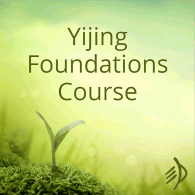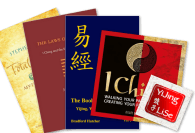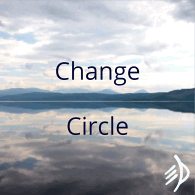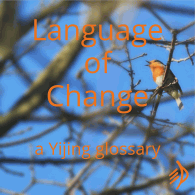
Note:
Back in 1994, Ritsema and Karcher published the Eranos Yijing: I Ching, the Classic Chinese Oracle of Change, the First Complete Translation with Concordance. That’s the book I really have to thank for this website and my work.
When Ritsema and Karcher parted company, each created their own revised edition of the original material. Karcher’s was I Ching: the Classic Chinese Oracle of Change, which differs from the original mainly in adding a little of his interpretation to each hexagram and line, and making the English a little more fluent. This page reviews Ritsema’s version.
The three books are almost completely identical, so don’t buy more than one of them unless you’re really at a loss for how to fill the space on your bookshelf.
What’s changed in this version
I’ve been comparing Ritsema/Sabbadini side-by-side with the original ‘R&K’. The introduction says that it contains ‘a number of significant improvements,’ ‘incorporating all the insights developed in a decade of research’, but it doesn’t seem all that different. The presentation is better, the Tuanzhuan has been demoted to a position after the line texts, the section on constituent trigrams has been lengthened. And yes, some words do have new translations.
There are a few significant changes to hexagram names: Hexagram 1 is Energy now, Hexagram 2 is Space; 57 is Root (I like it); 11 is Compenetration (I had to look that up). Some core words have gained ‘variants’: the most noticeable of these is that zhi is now translated as ‘to [x] belongs’ in places, which makes some parts read better. Sometimes the choice of core word is different, but the overall meaning of the translation is hardly ever changed.
The introduction
The introduction, though, is all new, and it’s good reading. (There are extensive excerpts available at Shantena Sabbadini’s website.) The most interesting, challenging part is the single sample reading (I wish there were more of these). But it’s also good on the nature of yi, on the edge between chaos and order, and synchronicity.
Ritsema depicts ancient Chinese as an ‘imaginal language’ with ‘minimal grammar’ – though I believe it does have a little more syntax than he lets on. ‘The imaginal fields of single ideograms stand next to each other as islands in an archipelago or as figures in a dream.’ And this feeds into the book’s core idea of what the oracle is and how it works:
‘…like dream images, the images of the Yi Jing do not have a unique a priori interpretation. Depending on the context, they can be read in many different ways. And the context is given by the consultant’s situation and question.’
And more radical assertions later:
‘There are no rules for interpreting these texts. They do not have an intrinsic meaning, independent from you and from your question.’
and
‘Remember that the answer does not reside in the words, but arises in the process those words trigger in you.’
It’s a very unusual approach, and goes a long way to explaining what’s unique about this book: there is no commentary whatsoever from the authors. A brief sentence outlines the subject matter of each hexagram, always beginning ‘The situation described by this hexagram is characterized by…’ – ‘a central idea or long term goal, around which a wealth of experiences accumulate [sic]’ for 26, for instance. And that is all the explanation you’ll get. If there is ‘no intrinsic meaning’, then there’s nothing to write commentaries about.
Continuing with the introduction – it offers good advice on what the oracle does and doesn’t do: it mirrors the present, but
‘we do not assume that the Yi Jing can foretell the future, because we do not assume that the future is univocally determined. A latent tendency in the present situation may actually develop into an actual consequence: but that is in no way a necessary conclusion…’
And the oracle doesn’t tell you what to do – much as we might wish it would – any more than dream images tell you what to do. This is all very clear, powerfully stated, and a fine antidote to the insidious ’slot machine for answers’ mentality of divination.
(Which makes it unfortunate, and odd, that when the querent in the sample reading asks simply ‘What about taking this job?’, the moving line is interpreted as telling her what she ‘should’ do – in fact as being a series of imperatives, rather than a description.)
There is much good advice on how to go about a reading – think first, ask specific questions about emotionally significant things, don’t ask yes/no or either/or questions, and so on. And a description of yin and yang, of lines, trigrams, and the three coin and yarrow methods to generate a primary and ‘potential’ (no longer ‘related’) hexagram. There’s also an account of the Yi’s historical development that doesn’t stop at the Zhou conquest, and makes interesting reading.
Utterly bizarrely, the introduction maintains that the original Zhouyi text is the first two Wings. (It isn’t.) And it says the Earlier Heaven trigram arrangement is older than the Later Heaven one – which is a bit more understandable, but also not true.
The translation
The text of the oracle itself is almost identical to the 1994 version, and works on the same basic principle. Each Chinese character is represented throughout by the same English word, which is listed in the concordance. Ritsema/Sabbadini call these ‘core words’, and they’re printed in bold red type. A few conjunctions and prepositions have been added, in lightface, to make the text read a little more smoothly. Each passage from the Chinese is then followed by its ‘fields of meaning’: a thesaurus-style listing of possibly meanings simultaneously present in the word. For example, the field of meaning for ‘losing’ is
‘be deprived of, forget; destruction, ruin, death; corpse; lament, mourn, funeral. Ideogram: weep and the dead.’
(Not all the accounts of ideograms will be accurate, as Ritsema has chosen to stick to traditional etymologies instead of more recent discoveries. These may well ‘describe the “aura” surrounding these terms in Chinese literature and poetry’ post-121AD, but that won’t necessarily be the same as their ‘aura’ in the time of the Zhouyi.)
The use of the ‘core words’ makes for an English version that is only half-way to a translation, but provides ways to get to know the oracle that are just not accessible through other books. Simply being able to recognise whenever the same Chinese word occurs – within a reading, or between readings – is hugely valuable. Working from a good, traditional translation – such as Wilhelm’s – you would never know that the top line of Hexagram 42, Increase, speaks of a lack of heng – which is the name of its opposite hexagram, 32, Persevering. The translation ‘he does not keep his heart constantly steady’ offers you no way to tell that this has any connection with a hexagram called ‘Duration’. But in the Eranos book you have
‘Abstaining from augmenting it.
Maybe smiting it.
Establishing the heart, no persevering.
Pitfall.’
The original version, and Karcher’s re-edition, tell you that ‘persevering’ is the name of hexagram 32. Ritsema and Sabbadini have for some reason removed this fact from the ‘fields of meaning’ attached to the line, but the use of the same word is still apparent for any reader to identify.
The subtitle for this edition is ‘the pure and complete texts with concordance’. And it is ‘pure’ in the lack of commentary, the absence of interpretive tradition. But I wonder whether they haven’t over-purified somewhat – no longer identifying hexagram names when they occur in other hexagrams being just one example. Yi is a multi-layered, multi-coloured text, and I’m not sure that systematically bleaching it of myth and legend does it any favours.
The Han trigram associations are left in – emphasised, in fact, with a section in the introduction on the Universal Compass, and a long passage on the outer and inner trigrams following directly after the tuan (Judgement) text for each hexagram. But the life and thought of ancient China isn’t there: the ‘decade of research’ obviously hasn’t been in that direction. Not only is there no new information compared with the 1994 edition – no Prince Kang in Hexagram 35, still, let alone King Wu or the Dipper constellation in 55 – but some of the minimal historical information that was in the first edition has inexplicably been ‘purified’ out. Line 11,5 is about Diyi, penultimate ruler of the Shang – but readers of the new Eranos edition will have to make what they can of ‘Supreme Burgeoning converting maidenhood’. The only exception to this seems to be hexagram 36, which has a nice passage on the end about the imprisonment of Wen and Jizi.
I’m very glad to have a copy of this book, not least because my copy of R&K is falling out of its binding. And I would still recommend it as the best way to leap into Yi at the deep end, without any commentary-lifebelts to get between you and the experience of divination. I don’t know of any other English version that will leave you so completely on your own – which offers a unique way to develop a personal relationship with the oracle. Not for everyone, of course, and not the whole picture, but a great gift to Yi-ist(e)s all the same.
I like
- the ‘one word per character’ principle of translation, bringing you much closer to the voice of the oracle itself
- the concordance, that lets you locate and compare all the occurrences of each character through the book
I wish
- maybe for a bit more acknowledgement of the Chinese syntax (there is some, and it does shape the meaning…)
- …and the myth and legend that infuses the text
Recommended for
- Anyone who wants to get closer to the oracle and develop their intuitive response to it.










